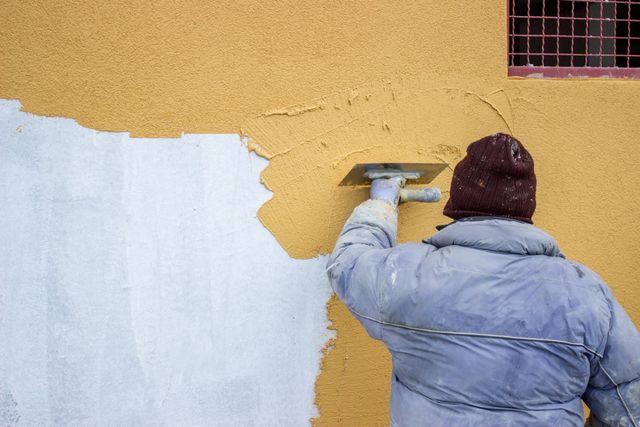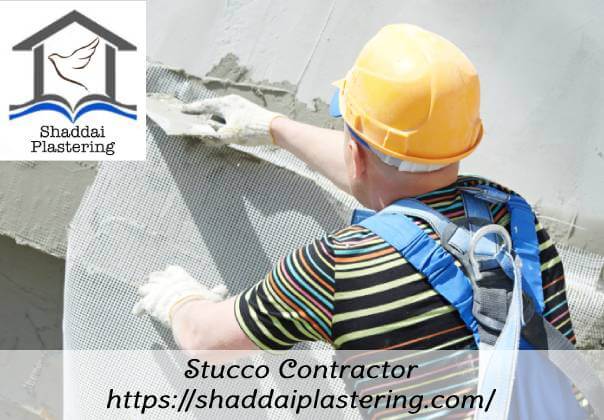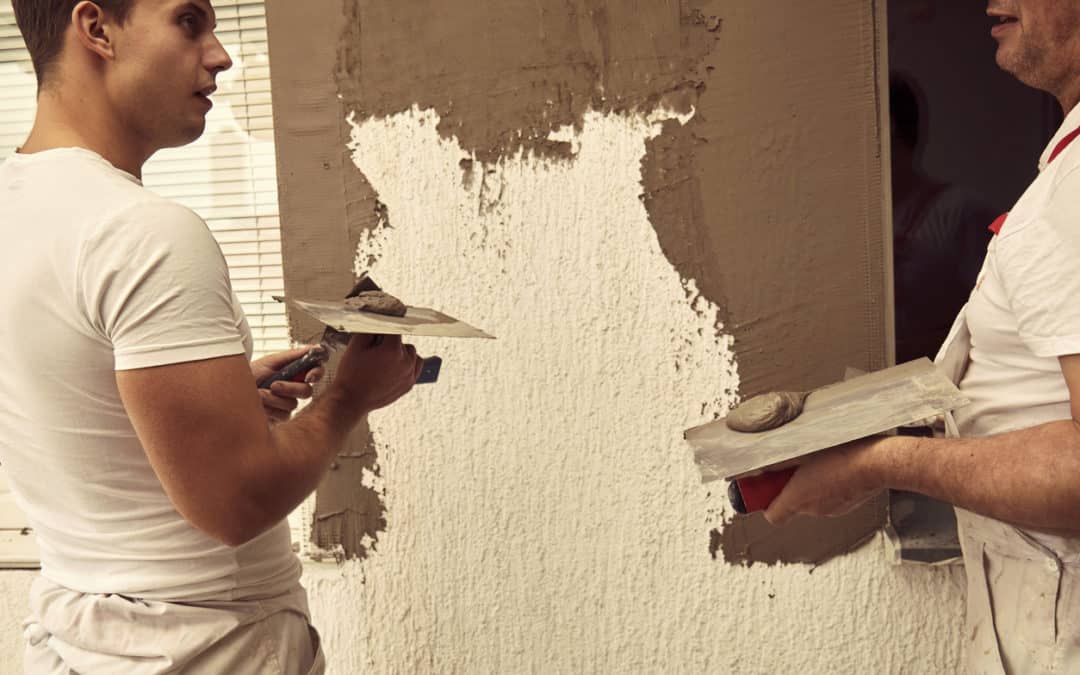Checking Out the Flexibility of Stucco in Modern Design
Stucco has long been acknowledged for its visual allure and versatility, yet its duty in modern architecture warrants a closer assessment. By discovering its ingenious applications, from striking exteriors to energy-efficient designs, one can appreciate exactly how stucco is redefining the limits of building expression.
Historic Value of Stucco
The historical relevance of stucco is profound, as it has actually played a critical function in building techniques across various societies for centuries. Coming from old worlds, stucco was made use of by the Egyptians and Greeks as a versatile and durable surface for both indoor and outside surfaces. Its versatility to various climates and capability to resemble much more expensive materials made it a favored choice.
In the Roman era, stucco ended up being a main ornamental element, used extensively in public structures, suites, and holy places. The Romans refined the application methods, enabling for intricate designs and alleviation sculptures. During the Renaissance, stucco experienced a rebirth, particularly in Italy, where it was utilized in decorative information and elaborate exteriors, showcasing the creativity of the duration.

Modern Applications in Layout
Stucco has actually located restored significance in modern architecture as a result of its versatility and visual charm (stucco contractor). This conventional material is significantly used in contemporary style, linking the space between modern and timeless aesthetic appeals. Designers and engineers value stucco for its flexibility, allowing it to be applied in numerous designs-- from minimal structures to elaborate Mediterranean designs
In household projects, stucco uses a tidy, smooth surface that improves the visual cohesion of exteriors. Its ability to adapt different shapes and surface areas makes it a perfect selection for both new constructions and remodelling tasks. Furthermore, stucco's durability and low maintenance needs add to its expanding popularity in city settings, where durable products are necessary.
Business applications have likewise embraced stucco, with many companies selecting this product to produce welcoming and distinct store fronts. Using stucco in public structures, such as schools and neighborhood centers, showcases its potential for producing visually attractive settings while providing superb insulation residential properties.
Shade and Appearance Advancements
Exploring color and appearance technologies in stucco has opened up new avenues for engineers and designers, enhancing the material's aesthetic impact in contemporary building and construction. Current innovations in pigment technology have actually enabled for a bigger spectrum of shades, making it possible for developers to create striking exteriors that integrate perfectly with their environments or attract attention as bold building declarations. This flexibility in shade selection supplies engineers the ability to evoke specific emotional actions and integrate with regional appearances.
Texture developments have actually in a similar way changed stucco applications. Methods such as shoveling, spraying, and stamping have actually resulted in varied surface coatings, varying from smooth and improved to sturdy and responsive. These variations not just contribute to the structure's personality yet additionally play an essential duty in light interaction, enhancing the visual deepness and dimensionality of surfaces.
Additionally, the introduction of synthetic stucco choices has broadened design opportunities, using enhanced resilience and climate resistance while keeping aesthetic allure. As designers remain to trying out innovative shade combinations and distinctive finishes, stucco continues to be a crucial element in modern design, showcasing the product's versatility and ageless significance in contemporary design.
Sustainability and Power Efficiency
Developments in shade and appearance have not only enhanced the visual appeal of stucco but likewise led the way for higher emphasis on sustainability and energy effectiveness in modern design. As ecological issues become increasingly famous, the construction sector is transforming its interest to materials that add favorably to eco-friendly equilibrium.
Stucco, composed primarily of natural materials such as lime, sand, and concrete, original site provides a sustainable choice to even more resource-intensive structure products. Its long life and resilience reduce the demand for frequent replacements, therefore decreasing waste and resource consumption with time. Additionally, modern stucco solutions commonly include energy-efficient ingredients that enhance insulation buildings, minimizing cooling and heating expenses for structures.
The reflective qualities of stucco can likewise be crafted to alleviate warmth absorption, adding to cooler indoor settings and less dependence on artificial climate control systems. By advertising power preservation and lowering the carbon footprint of structures, stucco aligns with the principles of sustainable architecture. As building contractors and designers take on eco-friendly methods and cutting-edge techniques, stucco sticks out as a flexible and responsible option in modern layout.

Study of Stucco Projects
The discover here flexibility of stucco as a structure product is exhibited in various effective building jobs that highlight its aesthetic and functional benefits. One remarkable example is the renovation of the historical Casa de la Guerra in Santa Barbara, California. Making use of stucco not just maintained the structure's Spanish Colonial Revival design however additionally improved its durability and climate resistance, making sure longevity while keeping architectural integrity.
An additional compelling instance is the contemporary household task, the Cactus Residence in Scottsdale, Arizona. stucco contractor. This striking home features a smooth stucco coating that harmonizes with the bordering desert landscape. The stucco's light color mirrors warm, contributing to power effectiveness, while the textured surface areas add aesthetic interest
Furthermore, the Kings Cross redevelopment in London showcases the flexibility of stucco in city settings. The application of stucco on modern-day mixed-use buildings produces a natural aesthetic that appreciates historic context while accepting modern design principles.
These study show how stucco can serve numerous architectural purposes, from conservation and power performance to aesthetic improvement, making it a Check This Out functional choice in modern design.
Final Thought
 In final thought, stucco's historical importance and modern convenience make it a useful product in contemporary architecture. As shown with various case researches, stucco proceeds to play a vital function in shaping the architectural landscape of the modern era.
In final thought, stucco's historical importance and modern convenience make it a useful product in contemporary architecture. As shown with various case researches, stucco proceeds to play a vital function in shaping the architectural landscape of the modern era.

In conclusion, stucco's historic significance and modern-day convenience make it a useful product in modern design.
Comments on “Common Mistakes to Stay Clear Of When Picking a Stucco Contractor for Your Home”